Autel Evo Lite+ vs DJI Air 2S: is Autel's new drone worth the extra?
Autel's Evo Lite+ is now available, does it trump the DJI Air 2S?
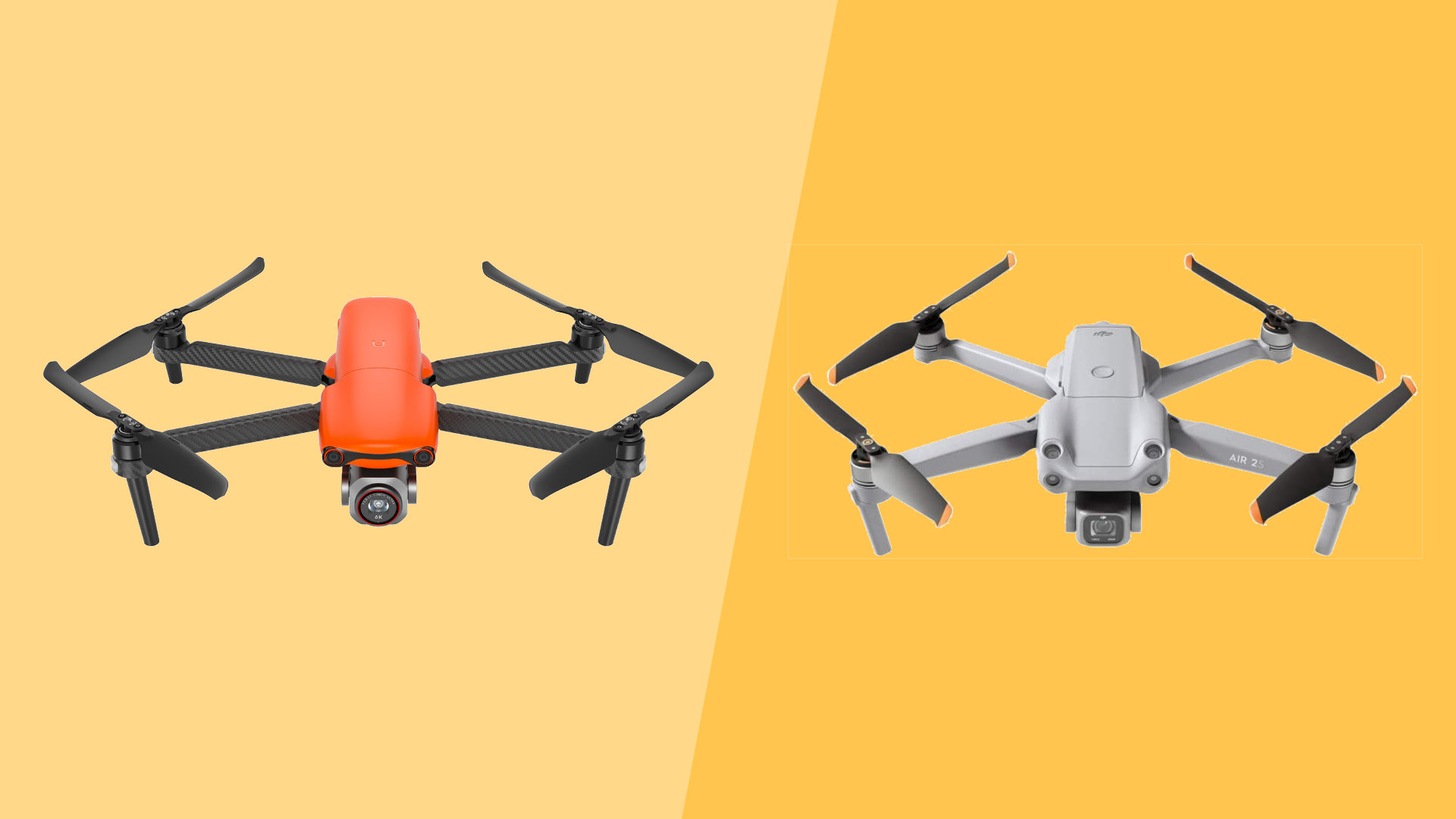
For a long time, it looked like DJI's affordable consumer drones would fly free from serious competition. But that all changed in September 2021 when Autel announced four upcoming drones that represent serious competition for DJI's successful, entry-level designs.
The Autel Evo Nano and Nano+ are designed to take on the excellent DJI Mini 2, while the Evo Lite and Lite+ models have landed to take a bite out of the popular DJI Air 2S.
Interestingly, the specification for the Evo Lite series looks like it was taken directly from an existing Air 2S owner’s wishlist – in fact, it could be a compilation of things we might well see in the DJI Air 3, if and when DJI releases that drone.
The Autel Evo Lite+ was designed to exceed or match the DJI Air 2S across the board, sporting almost everything in the existing DJI Air 2S, but with some features that go beyond that design and even compete with the Mavic 3.
But before we compare the drones and delve into the specifications, let’s start with the inevitable abuse that owning a Lite+ will unleash on your bank account.
- Read our in-depth Autel Evo Lite+ review
Autel Evo Lite+ vs DJI Air 2S: Price
With components in short supply and the cost of chip fabrication rising, the Lite+ was always going to top the Air 2S on price. But it's possible that the Air 2S' price could also rise, and the Air 3 will almost certainly cost more when it does appear.
At the time of writing, the Lite+ costs $1,349 / £1,129 / AU $2,499 for its standard package with a single battery and a single set of replacement blades. For the Premium bundle, with three batteries, lots of props, a three-battery charger, soft bag, and a few other goodies, that outlay increases to $1,649 / £1,399 / AU $2,999.
Sign up for breaking news, reviews, opinion, top tech deals, and more.

That compares unfavorably with the DJI Air 2S, with that drone costing $999 / £899 / / AU $1699 and its Fly More Combo with the extra batteries setting you back $1,299 / £1,169 / AU $2,099.
Overall, the Autel Evo Lite+ costs around $350 / £230 more, irrespective of which bundle you buy. That's a pretty substantial increase of about 30% over the Air 2S, which takes it to a level that's likely beyond the budget of many hobbyist fliers.
Autel Evo Lite+ vs DJI Air 2S: Design
While these drones look remarkably similar in layout and design, the Lite+ is altogether a larger drone that measures 210×123×95mm when folded and 427×384×95mm when the arms are deployed. By contrast, the DJI Air 2S is just 180×97×77 mm folded and 183×253×77 mm when unfolded. This scale makes the Lite+ marginally bigger than even the DJI Mavic 3.
As both of these drones are above the 250g threshold, it might not matter by exactly how much, but the take-off weight of the Air 2S is only 595g, whereas the Lite+ is significantly heavier at 835g.
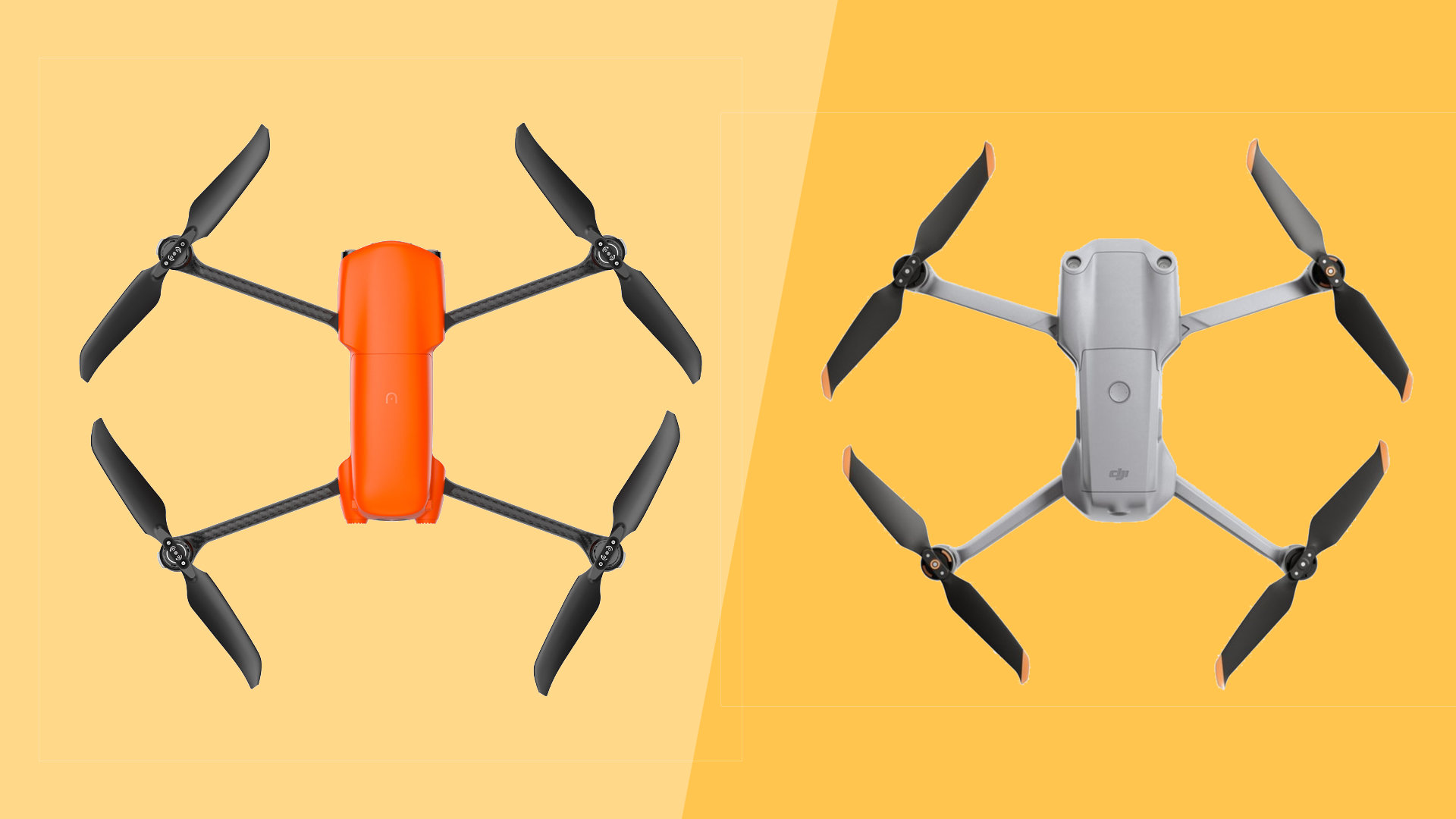
That might immediately look like a win for the Air 2S until you realise that the extra weight in the Lite+ is allocated chiefly to a larger battery, enabling a longer flight time of 40 mins over 32 mins on the DJI drone and superior wind speed resistance. It can also climb much more rapidly, reaching the legal height limit of 400ft in just 15 seconds.
Both drones have obstacle avoidance, an FFC transmission range of 12km and the ability to record up 5.4K resolution video up to 30 fps. But what truly divides these drones is the camera technology, as the Autel Evo Lite+ has a much more modern sensor, optics and image processing technology.
The Lite+ comes in three colors, including the signature Autel Orange, compared to the single grey color scheme that DJI has on the Air 2S.
Autel Evo Lite+ vs DJI Air 2S: Cameras
Sensor size is all about collecting as much light as possible to produce the best representation when stills or video are captured. Both drones have a 20MP 1-inch CMOS sensor with 2.4μm pixel size, but the Air 2S has a fixed f/2.8 aperture.
One feature that the DJI Mavic 2 Pro offered that's missing on the DJI Air 2S was a camera with a variable aperture. This is something that's offered by the Evo Lite+, with its aperture adjustable from f/2.8 to f11.
This allows much greater management of the light that's entering the camera, without the need for ND filters – and even greater scope if ND filters are used.

The camera field of view on both drones is pretty similar, at 88 degrees on the Air 2S and 82 degrees on the Lite+.
But the Lite+ sensor also has many other enhancements that enable it to capture relatively noise-free content in even very low light conditions. Whereas the video ISO for both drones is capped at ISO 6400 for standard scenes, a special night mode on the Lite+ allows the ISO to increase to an incredible ISO 48000. This gives the Lite+ the edge when shooting in low-light conditions, and it's also better able to capture realistic colors in those situations.
Where the Air 2S has an advantage is that it can capture content in a D-Log format that provides plenty of scope for adjustment in post-processing – this is something that Autel has promised in a future firmware release for the Lite+, but it isn’t available yet.
Autel Evo Lite+ vs DJI Air 2S: Video modes
While the Lite+ has ‘6K’ emblazoned on its camera, it offers an almost identical maximum resolution and modes as the Air 2S. The best resolution of the Lite+ is 5472x3076, whereas the Air 2S has two extra vertical pixel lines at 5472×3078.
At that resolution, both offer 30fps, and they can increase this to 60fps by trading down to 4K, and up to 120fps by going down to 1080p.
The maximum bitrate on offer is 150Mbps on the Air 2S and 120Mbps on the Lite+. This means there's slightly less compression on the DJI drone's video, though not enough to make a dramatic difference in quality.
Autel has promised HDR modes for 4K and lower resolution video in a future update, and that is something that DJI doesn’t offer or, at the time of writing, intends to add.
Both drones support H.264/MPEG-4 AVC and H.265/HEVC encoding, but the Lite+ has only 8-bit color representation where the Air 2S has the option to shoot 10-bit Dlog-M.
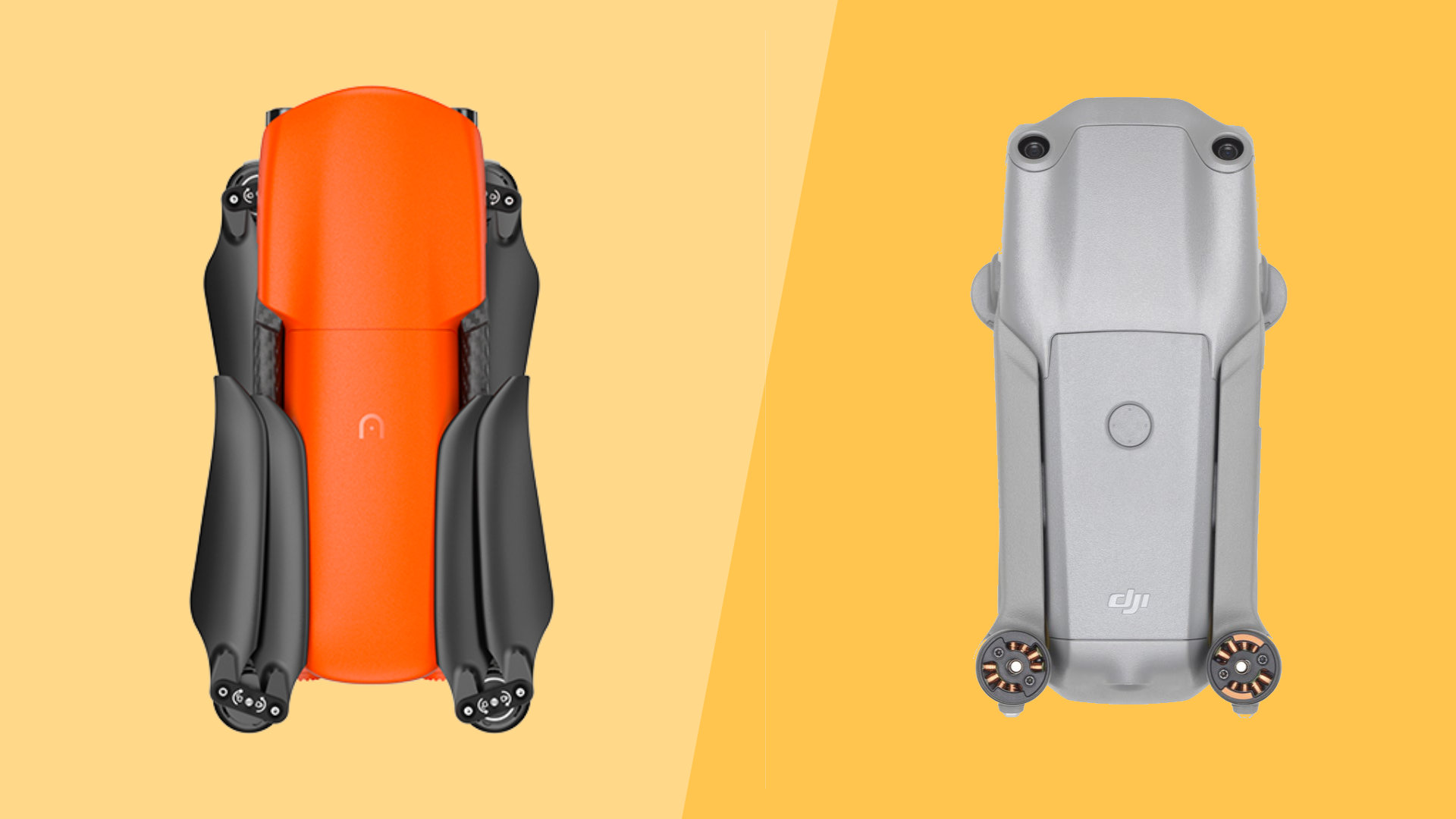
The biggest difference between these two cameras becomes evident at night, as the Air 2S has a maximum ISO of 6400 in manual video capture and only 1600 if you use Dlog-M.
For automatic video and still image capture, the Lite+ can match the Air 2S' ISO 6400 option, but using the Night scene mode boosts that sensitivity to ISO 48000. It also has special a moonlight processing mode to reduce noise impact when recording at these very high ISO levels.
Still images on the Lite+ can be shot in 10-bit DNG, showing the sensor can work with the extended contrast of this bit depth, and the maximum resolution is 5472x3648, identical to that of the Air 2S.
Overall, the Lite+ is a good representation of how camera technology has evolved since the Air 2S was launched, and its video quality is closer to that of the Mavic 3.
Autel Evo Lite+ vs DJI Air 2S: Performance
While the top speed of both drones is a similar 19m/s, the Air 2S has a quoted wind resistance of 10.7 m/s compared to the 16.5 m/s that the Lite+ can allegedly handle.
That performance level exceeds the 12 m/s of the Mavic 3 and hints at just how much power the Lite+ can call on when required. This raw grunt is apparent in ascent speeds, where it can rise at 8 m/s, a full 2 m/s faster than the Air 2S.
The flipside of this feature is that, being heavier, Autel prefers to avoid momentum taking control in rapid descents, and the Lite+ only comes down at 4 m/s, 2 m/s less than the Air 2S.
Overall, the Lite+ is better for getting up to altitude rapidly, but the Air 2S has a slight edge if you need to get the drone back on the ground quickly.
One good reason you might want to do that is a low battery, and with only a maximum of 3750mAh on the Air 2S and a flight time of just 31 minutes, that’s a plausible scenario.
The Lite+ has a relatively massive 6175mAh battery, and even though it carries an extra 240g (about the same as strapping a DJI Mini 2 to the Air 2S), it can remain airborne for an impressive 40 minutes.
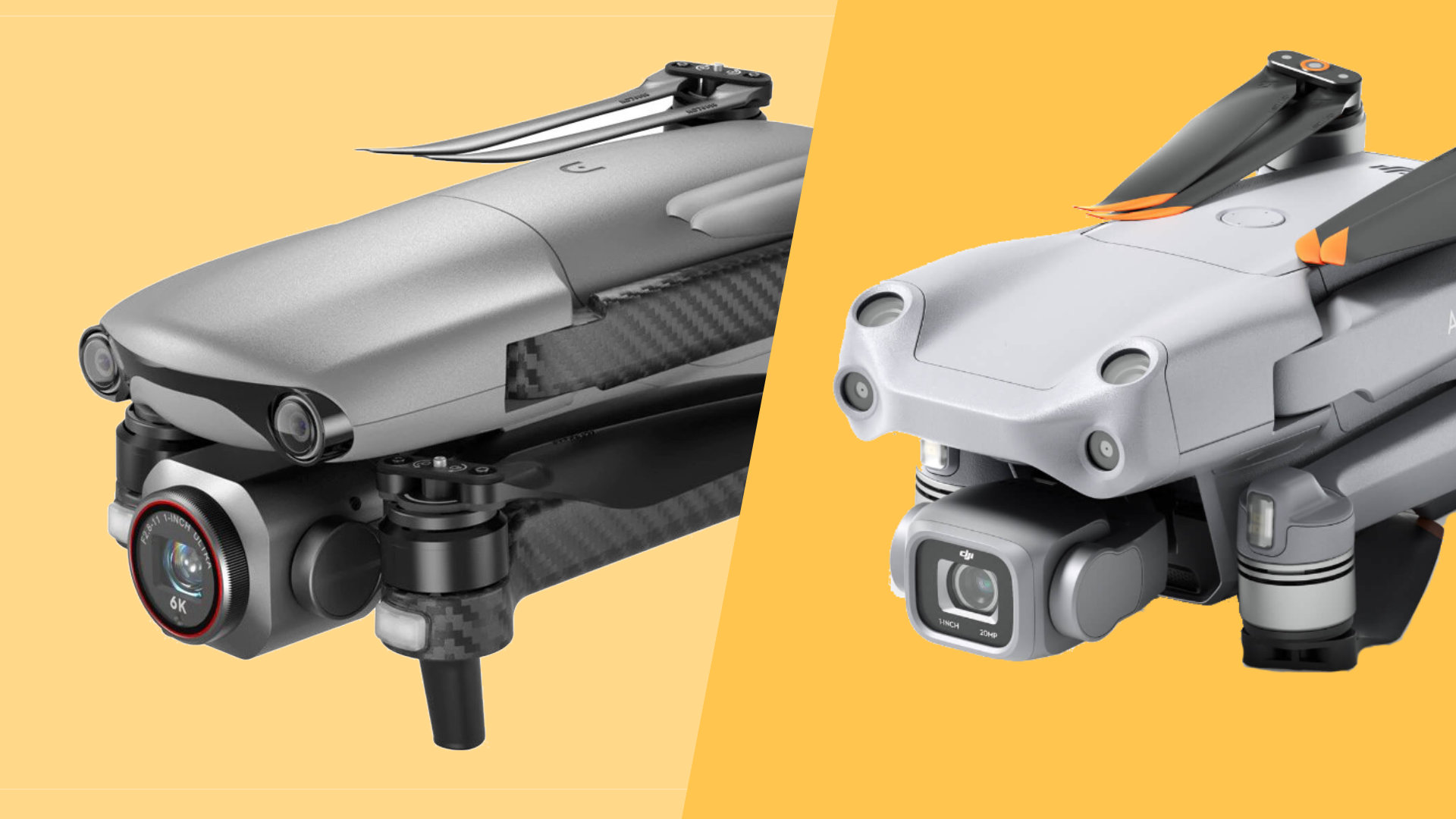
Many DJI Air 2S pilots would be thinking about recovery at around the 25-minute mark, but the Autel drone flyer has at least another ten minutes of operational time ahead. That’s plenty of extra time to take another go at achieving that unique shot or trying something new.
The differences between DJI’s Ocusync 3.0 and Autel’s SkyLink transmission technology are subtle. For the majority who operate within the visual range limits imposed by most countries, they won’t experience disconnections even where there are interfering signals.
Technically, Skylink is rated for 12km FCC and 6km CE, whereas Ocusync 3.0 is 12km FCC and 8km CE. Flying in a CE environment, we didn’t notice any dramatic disadvantage for the Autel drone.
What we can confirm is that Skylink is far superior to Ocusync 2.0 as seen on the DJI Mini 2 and original DJI Mavic Air 2. It's very easy to fly out to the 500m limit, even in a cluttered location and behind buildings, without ever losing the video feed or control.
One aspect of the Autel drone that we liked was that the transmission technology provides a 2.7K resolution live video stream back to the Sky app when the drone is within 1km, whereas all the DJI drones can only manage 1080p at best. The clarity of this image makes the Lite+ easier to work with when operating around tree branches and wires that the obstacle avoidance might not detect.
Autel Evo Lite+ vs DJI Air 2S: Obstacle avoidance and GPS
The obstacle avoidance system on these drones is very similar, offering forward, rear and below sensors, but lacking lateral vision. The Air 2S also has additional upward-looking sensors, making it suitable for those who like to fly under structures such as bridges.
While it isn’t comparable, the forward sensors of the Lite+ have a greater vertical angle than those on the Air 2S, enabling it to see things above it to a degree. Still, neither of these drones have the level of avoidance we’ve seen on the Skydio 2, but it might avoid an expensive accident, especially for those new to the hobby.
In both, obstacle avoidance is disabled in 'sport' mode automatically, and it won’t work in low light conditions. For night landings, both have an LED that illuminates the ground below the drone to help downward-looking sensors see during this flight phase.
Currently, the Lite+ employs a system that inhibits the user from flying into obstacles that the drone senses, though it won’t autonomously fly around them, whereas the Air 2S has the option to self-navigate in a limited way. We believe Autel intends to add this functionality, most likely when it delivers dynamic tracking to the Lite+ shortly.
For geographic location accuracy, the Lite+ can call on GPS, GLONASS and Galileo, the same technologies that the Air 2S uses. One extra feature on the Air 2S that isn't available on the Lite+ is AirSense, a technology to detect other aircraft and helicopters while flying.
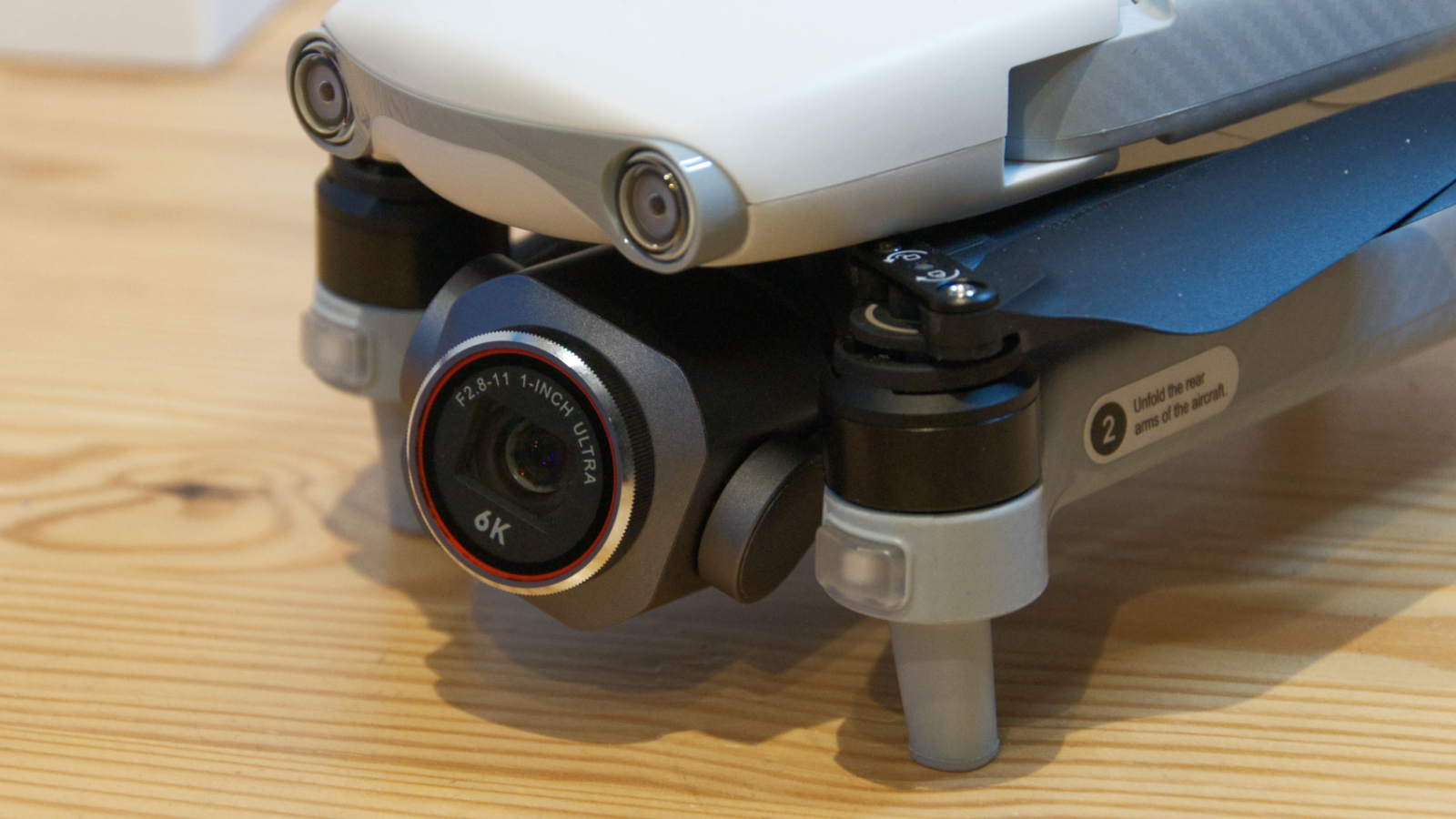
Autel Evo Lite+ vs DJI Air 2S: Early verdict
Like the recent DJI Mavic 3, the Autel Evo Lite+ has come to market with a few features still to be added, but fewer than the Mavic 3 had missing before its recent firmware update.
By comparison, the DJI Mavic Air 2 has been around for much longer, having first appeared in April 2020, before being updated to the DJI Air 2S a year later. This means the Air 2S is a more mature piece of technology with all its functionality complete.
DJI recently released an SDK for the Air 2S, enabling third-party applications like Litchi and Rainbow to operate the drone. Autel is also looking into providing an SDK, and we hope it provides one for the Lite+ at some point.
That said, the Lite+ has an attractive performance envelope already, and it will only get better as Autel delivers new firmware releases. A fantastic camera with enhanced low light capabilities and a variable aperture lens makes it ideal for those who take drone cinematography seriously.
When the extended flying time of the Lite+ is factored in, DJI now has some serious competition in the prosumer slice of the camera drone market. After Autel has added a flat profile shooting mode and 4K HDR capture, the Evo Lite+ could become the go-to solution for those unwilling to embrace the eye-watering cost of the DJI Mavic 3.
However, the Lite+ does cost a significant amount more than the Air 2S, and for those with a limited budget, that drone is still a great performer.
- Check out our guide to the best drones you can buy
Mark is an expert on 3D printers, drones and phones. He also covers storage, including SSDs, NAS drives and portable hard drives. He started writing in 1986 and has contributed to MicroMart, PC Format, 3D World, among others.
